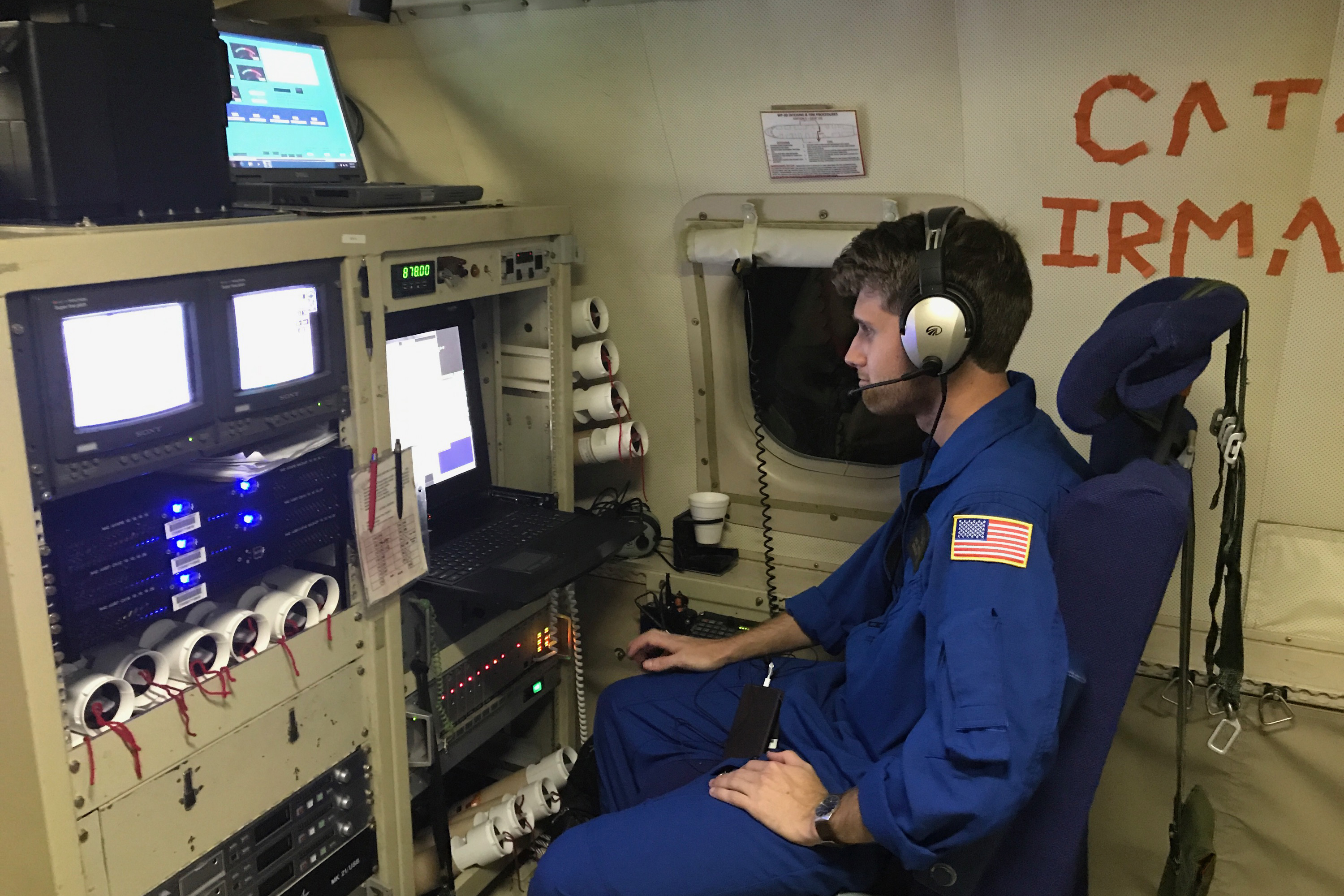West Virginia University alumnus Nick Underwood has been flying into the eye of Hurricane Irma, the most powerful Atlantic Ocean hurricane in recorded history, to collect critical data about the storm and where it’s headed.
alumnus Nick Underwood has been flying into the eye of Hurricane Irma, the most powerful Atlantic Ocean hurricane in recorded history, to collect critical data about the storm and where it’s headed.
Underwood, a native of Beaver, graduated from WVU in 2014 with a degree in aerospace engineering. He has spent the last year working with the National Oceanic Atmospheric Administration’s Aircraft Operations Center.
He serves as an aerospace engineer and aircrew member aboard the organizations WP-3D Orion aircraft, which is specially outfitted to carry out hurricane research and reconnaissance missions from within powerful storms.
Underwood has undergone two flights into the eye of Irma, a category five hurricane with maximum sustained winds of more than 185 miles per hour.
“We fly directly into the eye of the storm and yes it’s as wild as you’d think,” said Underwood. “By flying into the storm we’re able to collect critical data that helps to determine the storms path and intensity.”
Underwood’s job on the plane is to deploy cylindrical scientific instruments, called dropwindsondes, into the storm which then relays temperature, pressure, humidity and wind data back to the aircraft.
The data then gets sent to the National Hurricane Center where they use it to update their landfall prediction models and to determine if evacuations are necessary, which in turn allows for lives to be saved.
“Our research and reconnaissance flights can’t stop the storm but we can give people enough warning to get out of the way,” said Underwood. “Evacuation orders aren’t just issued for no reason; they save lives.”
Underwood and the other members of the team are scheduled to conduct several more flights into the eye of Irma throughout the week to determine if the catastrophic storm will make landfall in the United States. The record-breaking storm has already begun making its way across the Caribbean, causing devastating storm surges, destructive winds and dangerous flash flooding.
Although it is unclear at this time where Hurricane Irma will make landfall, evacuations have already been issued throughout Florida. Officials are airing on the side of caution due to the recent path of destruction left by Hurricane Harvey, a category four storm that ripped through Texas less than a week ago. NOAA corps pilots have been aiding emergency responders with recovery efforts by deploying several small aircrafts to map the destruction left behind by Harvey throughout the state.
Underwood is hopeful that the additional flights that have been scheduled into Irma will help prepare individuals for evacuation and minimize the need for additional recovery efforts should the storm make landfall in the U.S.
“Our mission is to track and research storms the best we can and to provide aerial reconnaissance with our smaller planes in the aftermath to help with emergency response and planning,” said Underwood. “NOAA is an amazing organization and I’m proud to be doing the work that I am. If we can put a few people into the storm to get information that will allow for many more people to get out of the way of Irma, I think it’s worth it.”